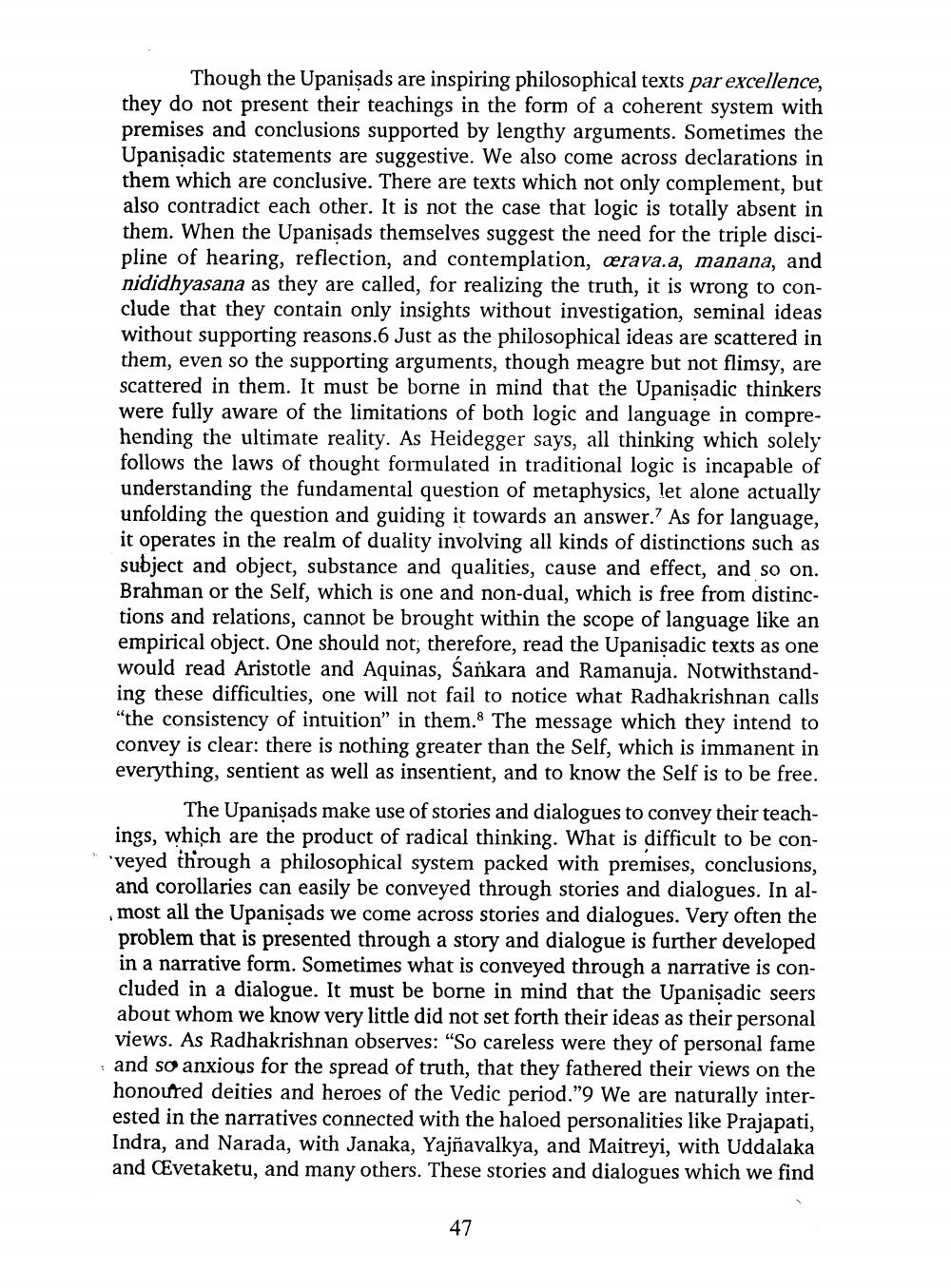________________
Though the Upanişads are inspiring philosophical texts par excellence, they do not present their teachings in the form of a coherent system with premises and conclusions supported by lengthy arguments. Sometimes the Upanisadic statements are suggestive. We also come across declarations in them which are conclusive. There are texts which not only complement, but also contradict each other. It is not the case that logic is totally absent in them. When the Upanisads themselves suggest the need for the triple discipline of hearing, reflection, and contemplation, ærava.a, manana, and nididhyasana as they are called, for realizing the truth, it is wrong to conclude that they contain only insights without investigation, seminal ideas without supporting reasons. 6 Just as the philosophical ideas are scattered in them, even so the supporting arguments, though meagre but not flimsy, are scattered in them. It must be borne in mind that the Upanişadic thinkers were fully aware of the limitations of both logic and language in comprehending the ultimate reality. As Heidegger says, all thinking which solely follows the laws of thought formulated in traditional logic is incapable of understanding the fundamental question of metaphysics, let alone actually unfolding the question and guiding it towards an answer. As for language, it operates in the realm of duality involving all kinds of distinctions such as subject and object, substance and qualities, cause and effect, and so on. Brahman or the Self, which is one and non-dual, which is free from distinctions and relations, cannot be brought within the scope of language like an empirical object. One should not, therefore, read the Upanisadic texts as one would read Aristotle and Aquinas, Sankara and Ramanuja. Notwithstanding these difficulties, one will not fail to notice what Radhakrishnan calls "the consistency of intuition” in them. The message which they intend to convey is clear: there is nothing greater than the Self, which is immanent in everything, sentient as well as insentient, and to know the Self is to be free.
The Upanisads make use of stories and dialogues to convey their teachings, which are the product of radical thinking. What is difficult to be con'veyed through a philosophical system packed with premises, conclusions, and corollaries can easily be conveyed through stories and dialogues. In almost all the Upanisads we come across stories and dialogues. Very often the problem that is presented through a story and dialogue is further developed in a narrative form. Sometimes what is conveyed through a narrative is concluded in a dialogue. It must be borne in mind that the Upanisadic seers about whom we know very little did not set forth their ideas as their personal views. As Radhakrishnan observes: "So careless were they of personal fame and so anxious for the spread of truth, that they fathered their views on the honoured deities and heroes of the Vedic period."9 We are naturally interested in the narratives connected with the haloed personalities like Prajapati, Indra, and Narada, with Janaka, Yajñavalkya, and Maitreyi, with Uddalaka and Evetaketu, and many others. These stories and dialogues which we find
47




